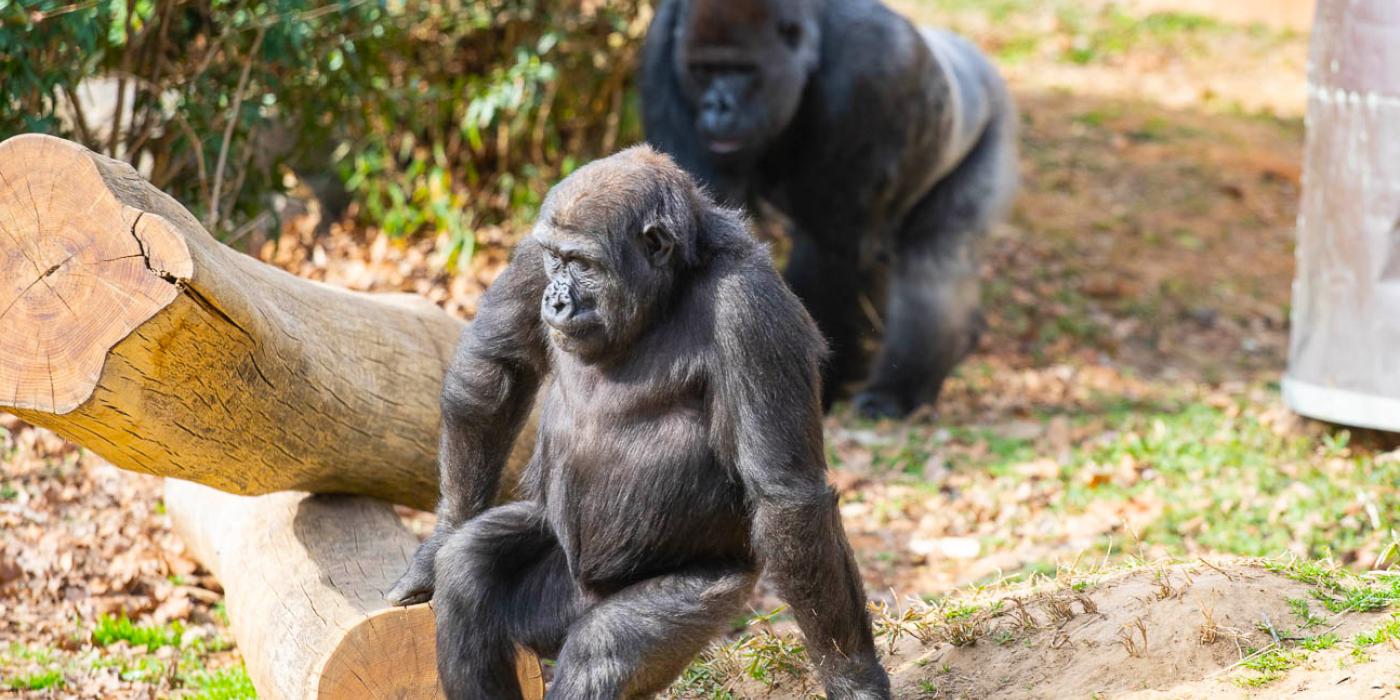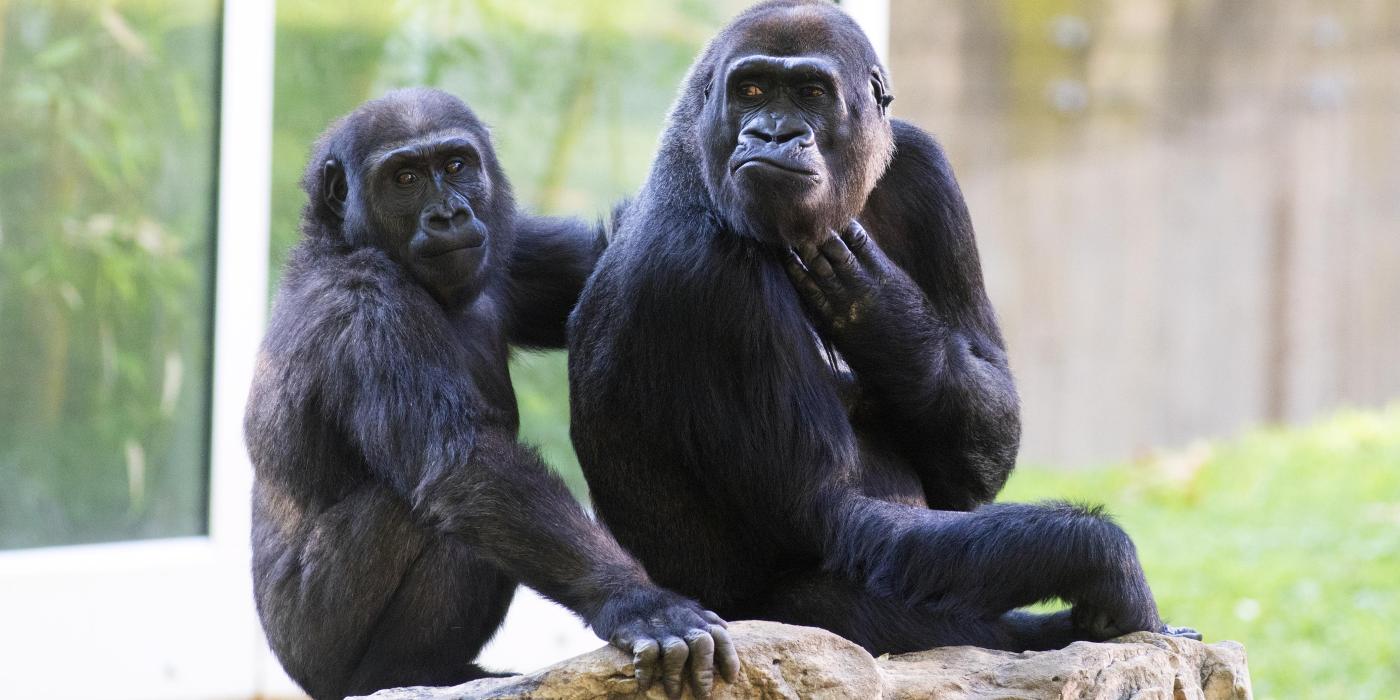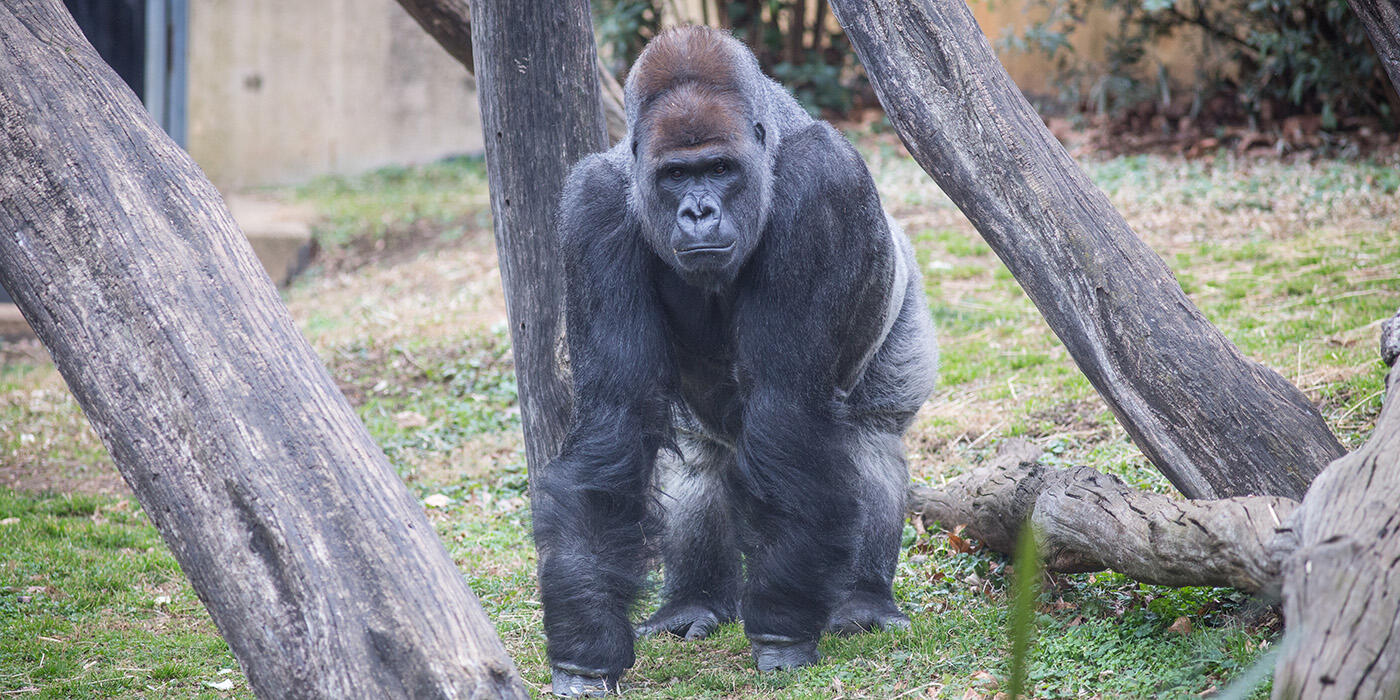Amazing Ape-ril
Spring is a truly special season to visit the Smithsonian’s National Zoo and Conservation Biology Institute. As the weather warms and the plants come into peak bloom, the Zoo transforms into a magical respite from the busy city just outside our gates.
Our animals, too, seem to enjoy soaking up the sun’s rays. Visit this time of year, and you’ll see orangutans traversing the Orangutan Transport System (O-Line), western lowland gorillas collecting puzzle feeders from their new climbing structure and our siamangs taking a siesta in the grass.
These amazing apes bring the primate team joy every day. We are fortunate to have so many charismatic animal ambassadors, each with their own unique personalities and quirks. Every individual is worth celebrating, especially since many of the species we care for are considered endangered or critically endangered by the International Union for Conservation of Nature. April, or Ape-ril, is a great time to recognize our apes because many of them celebrate their birthdays this month!
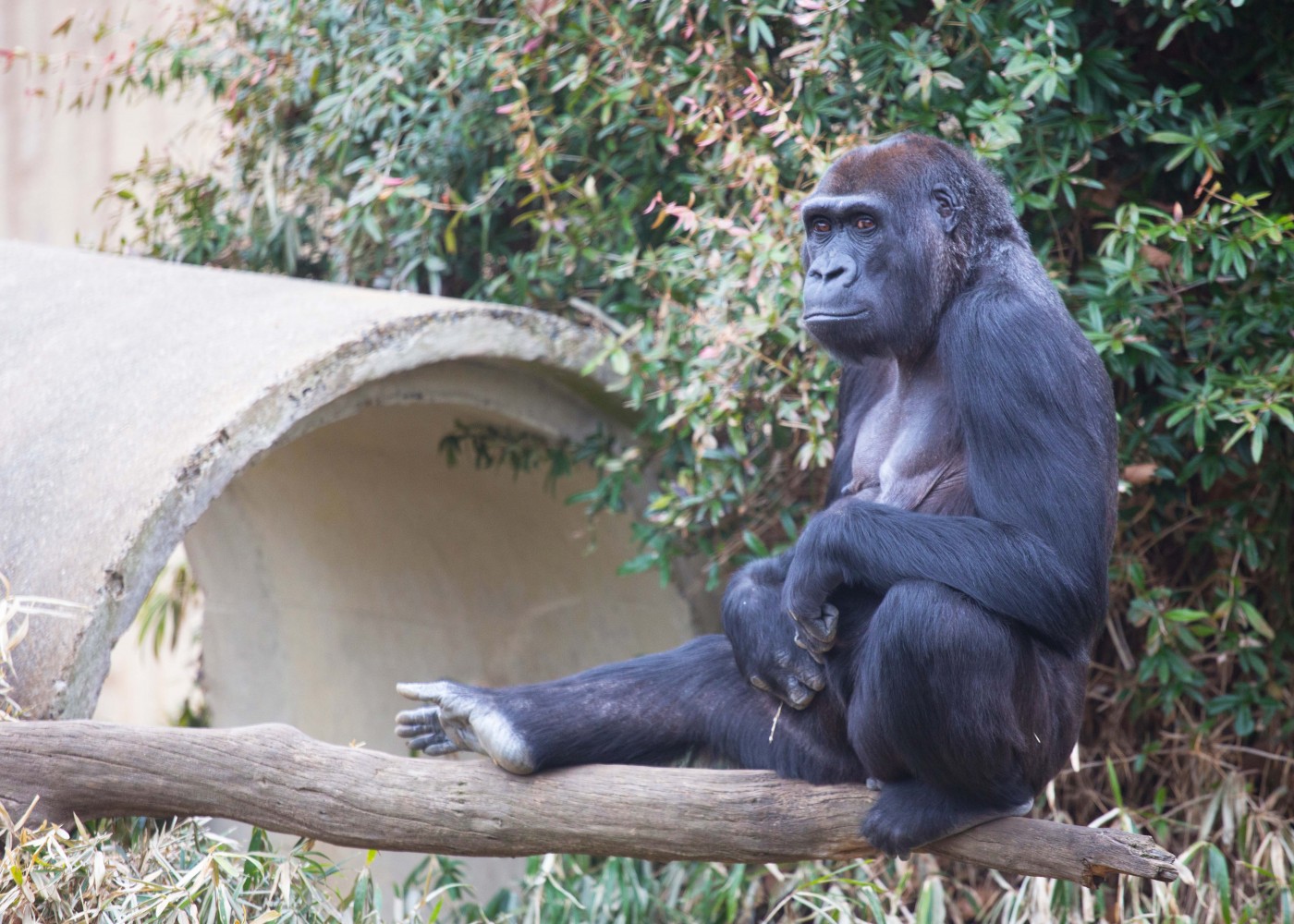
Our oldest gorilla, Mandara, turned 40 years old April 5. She arrived at the Great Ape House many years ago when she was just a youngster. Mandara proved to be an exceptional mother to all six of her offspring, and even served as a foster mother to our silverback, Baraka, when he was an infant. Her status as a superstar in the Species Survival Plan breeding program for western lowland gorillas earned her the nickname “Mama.” Today, this matriarch of our gorilla troop is a grandmother many times over. At her age, she is considered geriatric, but she is in good health and can even keep her youngest troopmate, Moke, in line!
Mandara knows how to ask for—and get—what she wants from her keepers. We pamper her often, and she obliges us by voluntarily participating in positive reinforcement training sessions. When she sees keepers coming, she moves quickly to an enclosure away from the troop so she can train without interruption. She seems to enjoy these one-on-one training sessions with us. She gets lots of attention and eats all of her tasty fruit rewards at her leisure, without competition from the other gorillas.
Just like humans, as gorillas age, their joints don’t have the same ease of motion as they once did. The same goes for Mandara, who receives joint supplements and physical therapy exercises to keep her joints in tip-top condition. On our cue, Mandara can flex her ankles and move her hips. She happily participates for treats. Currently, Mandara has no issues with moving or climbing, and these exercises should maintain her mobility for many years to come.
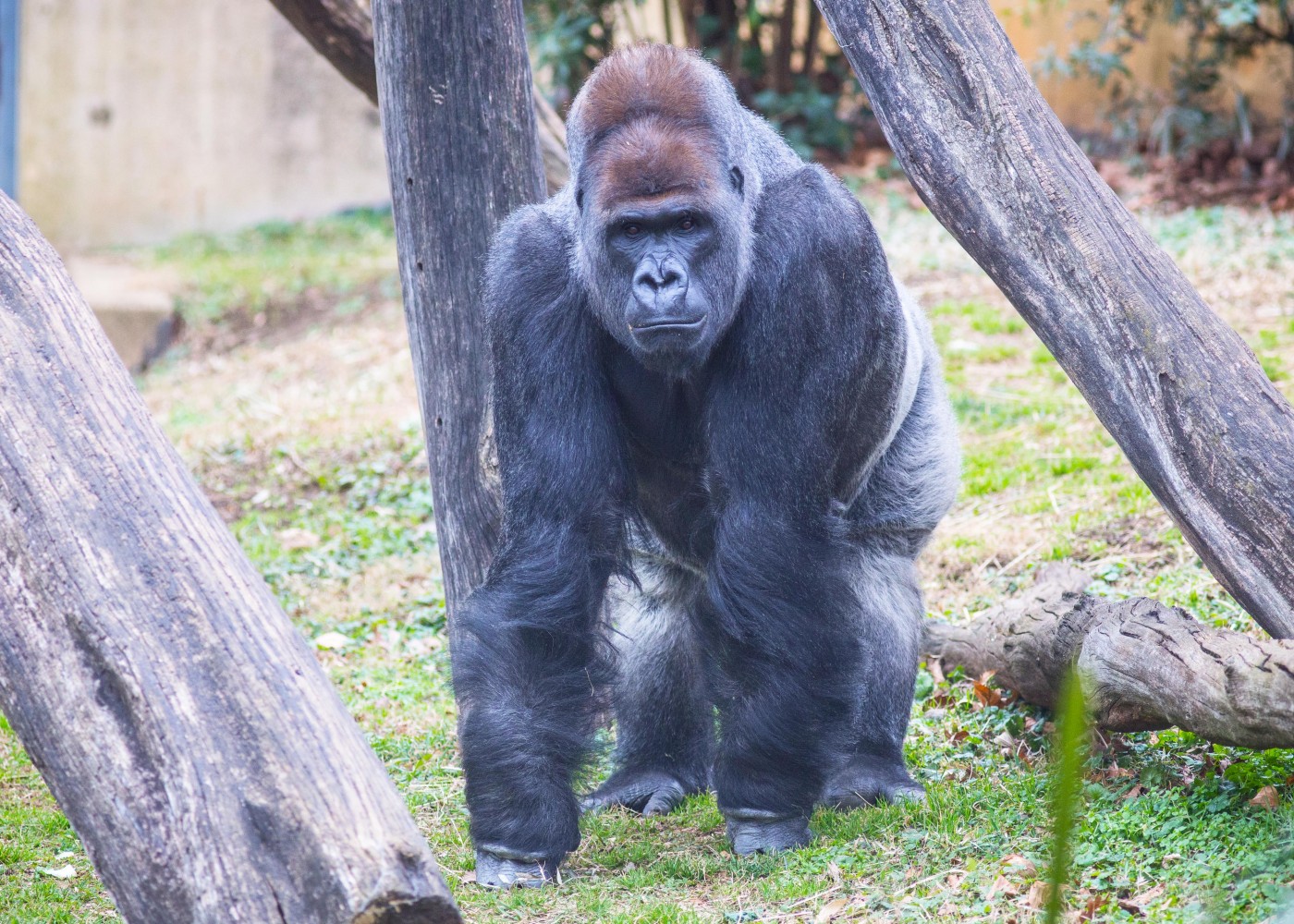
Baraka, our next great ape to celebrate a milestone birthday, turned the big 3-0 April 11! Our silverback is a fantastic protector and guardian. Whenever there are vehicles or workmen that he doesn’t know near the Great Ape House, he is on high alert and keeps a close eye on his troop. Usually, Baraka has two speeds: constant vigilance or sacked out and sleeping. Being a silverback is tiring work!
Those two speeds make Baraka a bit more challenging to train. On the one hand, it can be difficult to get and hold his attention while he’s monitoring his troop mates’ activities. At other times, he is clearly not in the mood to train, which is ok. Our animals always have the option to participate or walk away. Recently, Baraka was trying to focus during a training session, and his mischievous son, Moke, ran up behind him and slapped his back! You can see why he’s got to keep an eye on the others at all times—to thwart sneak attacks. Despite these distractions, primate keeper Val Schultz was able to train Baraka to open his mouth on cue this past year. This allows us to keep a close eye on his teeth to look for cracks, inflammation of the gums or other issues.
Baraka uses those big teeth during his favorite pastime—eating! When we offer the gorillas food, we spread it out so that they can use their natural foraging abilities. Scattering the food also helps reduce tension and competition. Even so, it doesn’t stop Baraka from hoarding food when offered. With his 400-pound frame, Baraka will even use the tactic of sitting in a doorway to stake his claim of extra enrichment, blocking the other gorillas’ access to it. I wonder if he believes that since he is the biggest, he should get the most!
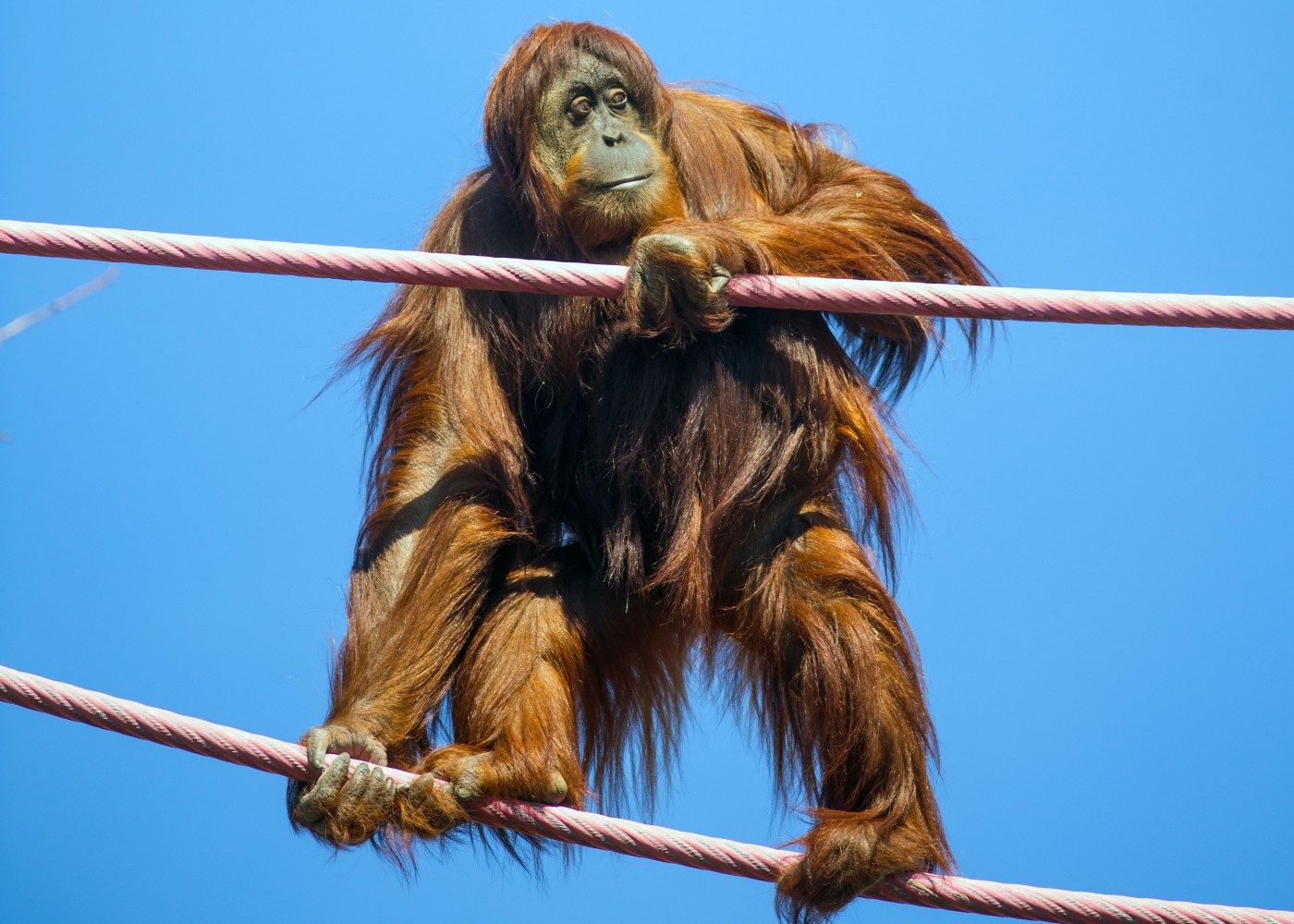
On the orangutan side of the Great Ape House, Iris turned 35 years old April 15. Did you know that she was named for the IRS (Internal Revenue Service) because she was born on tax day, April 15? It’s true! Iris’s mind is very sharp; she excels at cognitive research projects, husbandry training and other tasks that require brain power. Her goofy personality is incredibly endearing. She often shows off, tumbles around, hides under sheets and chases after her fellow orangutans—and keepers! Her wonderful sense of humor and energy make her a great “auntie” and playmate for Redd, our 5-year-old orangutan.
The O-Line, a series of 50-foot-tall towers and cables that connect the Great Ape House and Think Tank exhibits, gives our orangutans choice and control over where they would like to spend the night. On sunny days, we often find “princess” Iris hunkered down in a hammock in the outdoor habitat, taking a nap. It can take a bit of coaxing from keepers to get Iris to rise and come inside for the evening.
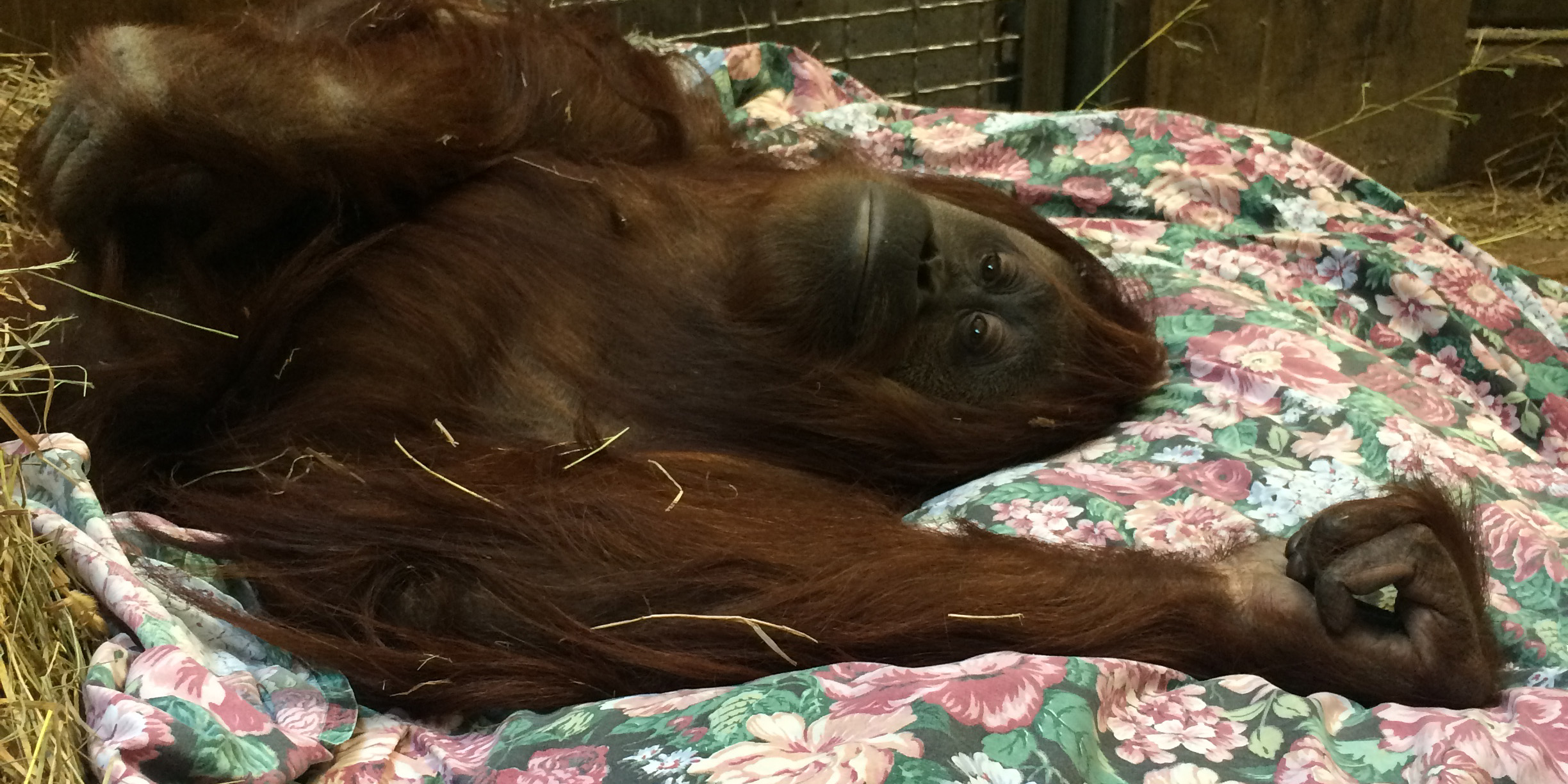
Iris enjoys her beauty sleep and is very skilled at building comfy night nests. Great apes make a new nest each night to sleep in. However, orangutans are unique in that their nests are often high up in the treetops. In the wild, orangutans bend branches and leaves to craft a secure and comfortable spot to sleep. Here at the Zoo, orangutans construct their nests out of hay, wood wool, fleece blankets and sheets. Iris’s night nests are very elaborate and often very tall. In other words, they’re fit for a princess!
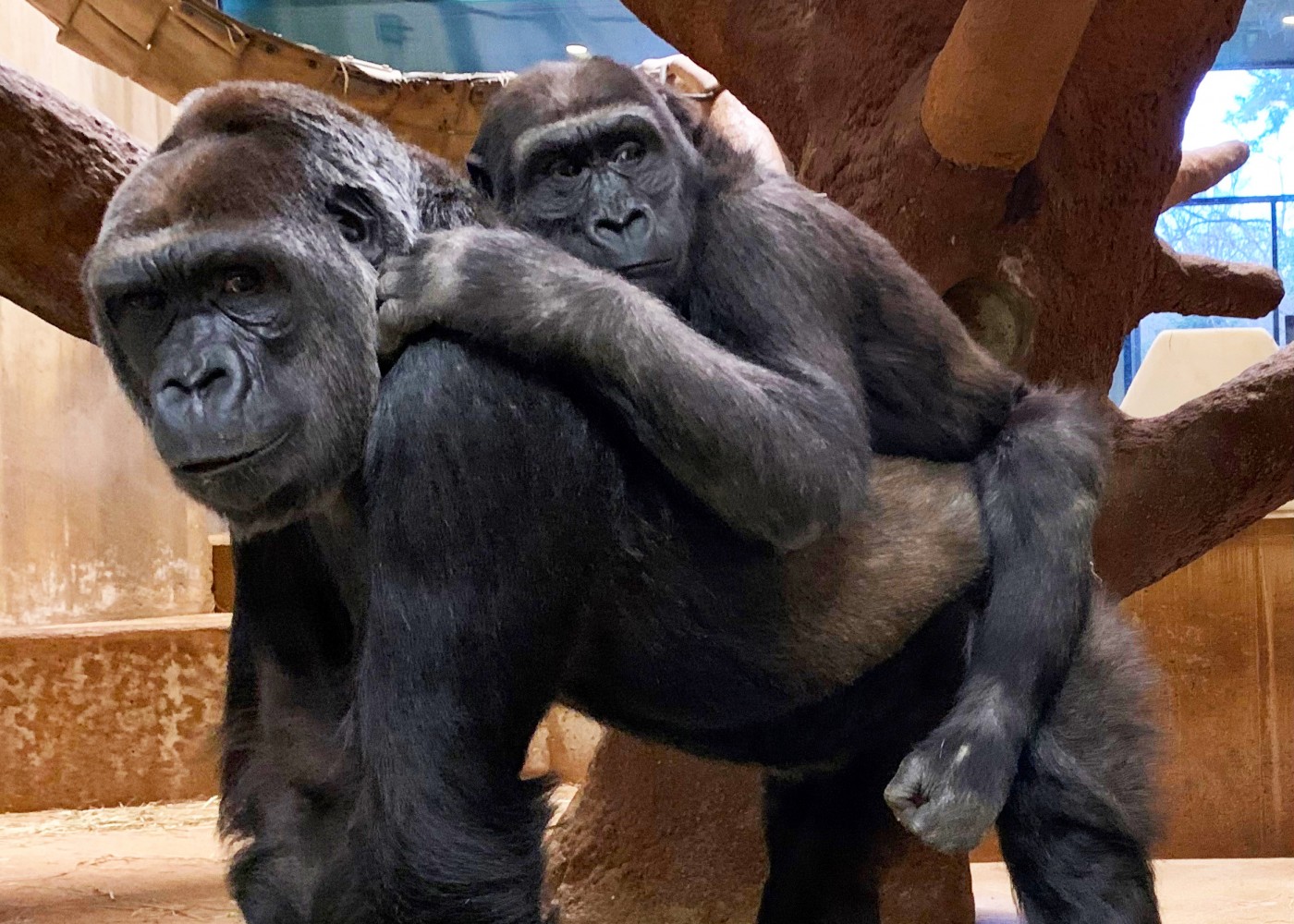
Iris shares her birthday with our youngest western lowland gorilla, Moke, who just turned 4 years old! Time flies when you’re having fun, and this big goofball always wants to play with his troopmates (especially best friend, Kibibi) and keepers. One of his favorite “games” is to collect small rocks, sticks, grass and dirt from the outdoor habitat, then lay in the chute that connects the outside and inside enclosures. When an unsuspecting keeper passes under him, the mess comes raining down! He gets a big kick out of this—it’s one of his favorite pranks to pull.
Moke has a seemingly endless amount of energy and is always on the move. As you can imagine, he has a short attention span, so the positive reinforcement training sessions we do with him are quick to match. He is making great progress and has mastered opening his mouth, presenting his arms, hands and feet, and sitting still for vaccines.
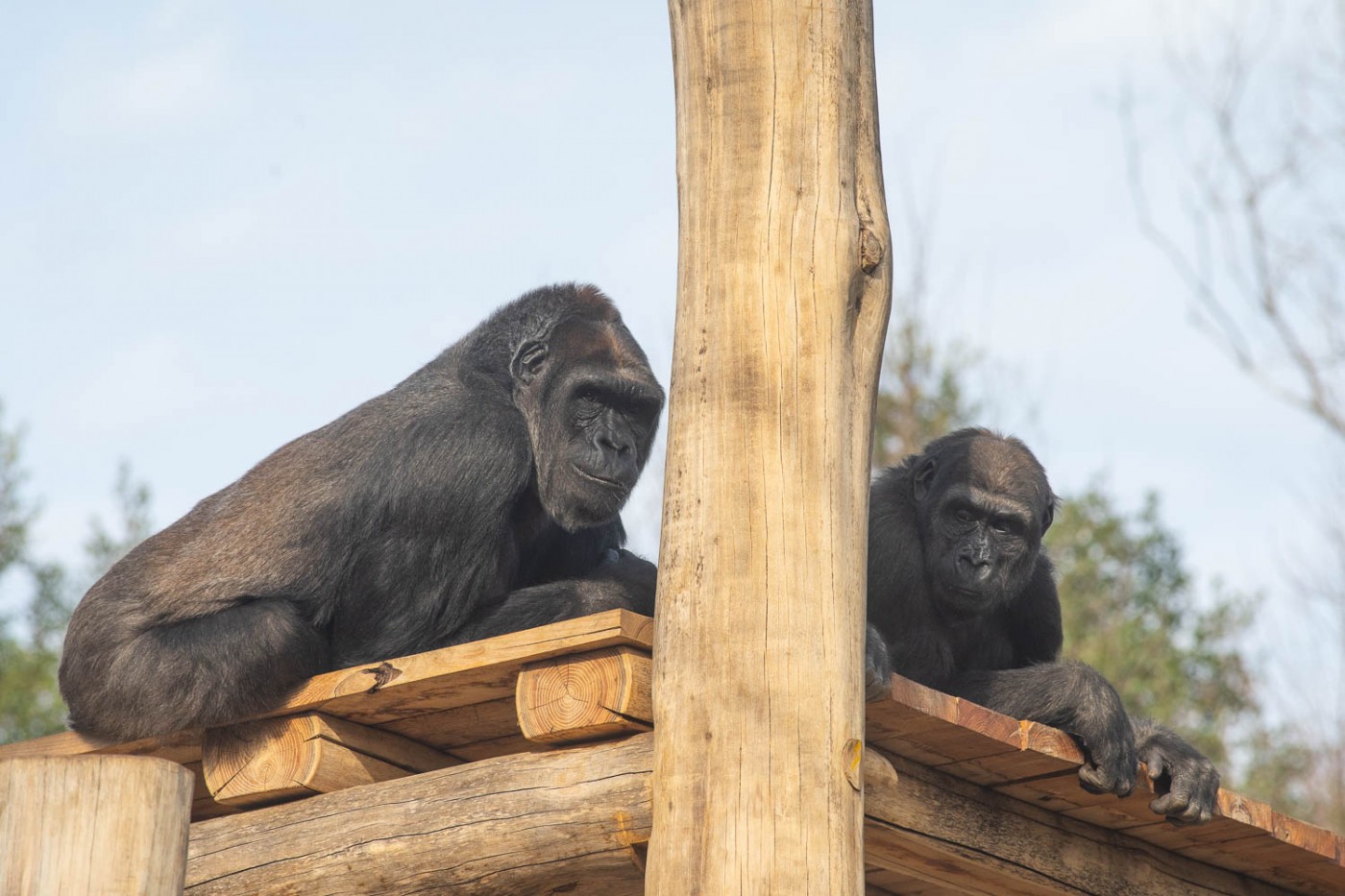
One training behavior that is a work in progress involves briefly separating Moke from his mother, Calaya, so that keepers can train them individually. This is an important step for young gorillas, as it allows them to gain confidence away from their mothers. It also allows each gorilla to get the undivided attention of their keeper, which helps progress their training at a faster pace. Often, young gorillas have no problem with these brief separations. Rather, it’s the moms that need a bit of convincing—especially since they’re used to stealing food from the little ones! Moke and Calaya’s separations remain short and positive.
Now that you are acquainted with some of our great apes, stop by and see them sometime! Connecting people with nature is at the core of the Smithsonian’s National Zoo’s mission. With Mandara, Baraka, Iris, Moke and all the other primates that call the Zoo home, we couldn’t ask for more amazing animal ambassadors!
This story appears in the May 2022 issue of National Zoo News. Swing into spring with the Zoo’s primates! Get to know our new gibbons—Adi and Guntur—in the latest update from keeper Carly Hornberger.

